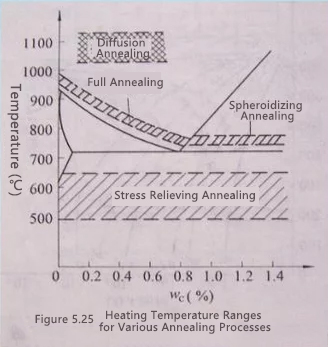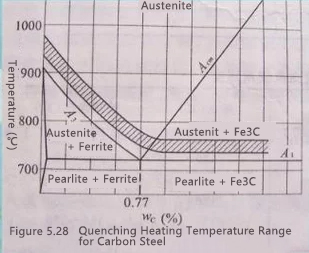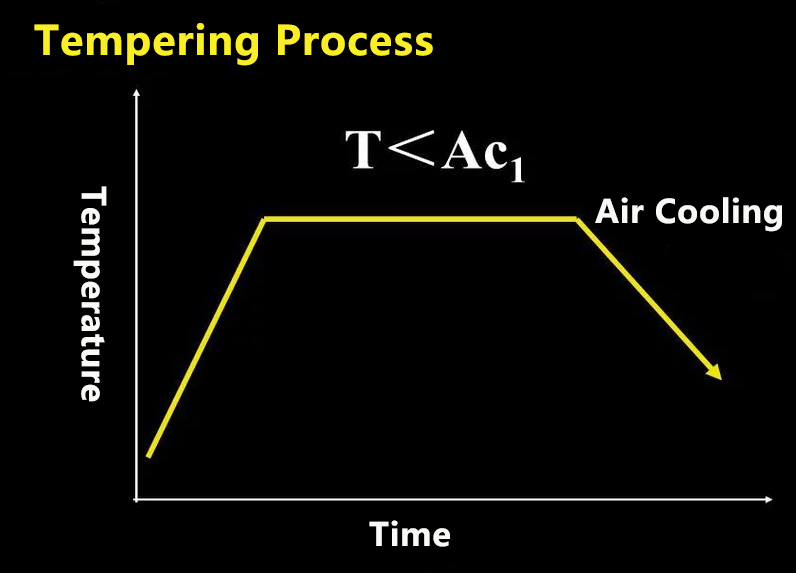Heat treatment is a process of processing metal materials at different temperature ranges, holding them at certain temperatures, and cooling them to change the overall internal structure of the material and obtain the desired properties.

Currently, the most widely applied heat treatment processes include annealing, normalizing, quenching + tempering. Choosing the appropriate heat treatment process based on the product's performance is crucial because different processes can result in significantly different properties and costs.
Annealing
This is a heat treatment process where steel is heated to an appropriate temperature, held for a period, and then cooled in the furnace. Its main purpose is to improve the internal structure of the product and enhance its machinability.
Purpose: To refine the grain size, reduce hardness, eliminate internal stresses, and prepare for the final heat treatment.
Annealing is divided into annealing, full annealing, isothermal annealing, etc., all aimed at stress relief and grain refinement.
Sure, here is the translation of the text in the image from Chinese to English:

Normalizing
Heat the steel to 30-50°C above AC3, hold for a period, and then air cool.
The difference from annealing is the cooling medium, which is different, leading to a faster cooling rate and greater supercooling.
In terms of cost, normalizing is more convenient to operate, has a shorter production cycle, and is less expensive, which is why it is often chosen in the production process.
Purpose: To refine the grain size, reduce hardness, and eliminate internal stresses.

Quenching + Tempering
This actually involves two separate processes: quenching and tempering.
Quenching is a heat treatment process where steel is heated above AC1 or AC3, held for a certain time, and then rapidly cooled to obtain a martensitic structure, which is the most important heat treatment method for strengthening steel. Martensite is not the final structure required by heat treatment; generally, tempering is necessary after quenching.
Tempering involves reheating the quenched steel to a temperature below AC1, holding it for a certain period, and then cooling it to room temperature to achieve the final structure of the steel part.
Purpose: To eliminate quenching stresses, reduce the brittleness of the steel, and stabilize product dimensions.

Quenching cooling medium: It can be divided into water and oil. Different materials and different performances require different cooling media.
Water is the cheapest, safe to use, and has strong cooling capabilities.
Oil has a cooling speed much slower than water in the range of 200-300°C, which is beneficial for reducing quenching deformation and cracking. However, in the range of 500-650°C, the cooling speed is slower than water, making it suitable for quenching alloy steels with greater stability.
Choosing the right heat treatment process based on the product material is crucial. Ningbo Qianhao has a professional engineering team that will provide the best heat treatment process plan based on the performance provided by the customer to meet their different needs.
Wang Bo
January 24, 2025